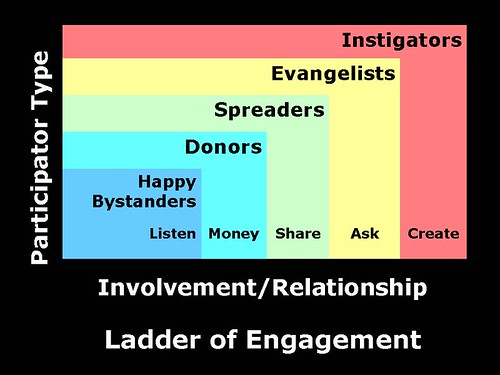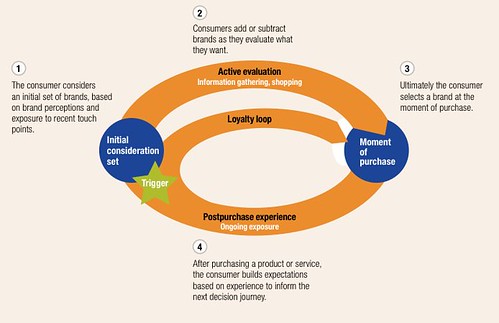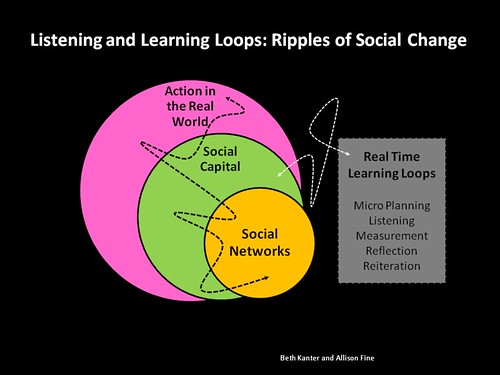The Networked Non-Profit, by Beth Kanter and Allison Fine, a book that every non-profit should read with their staff, presents concepts and case studies on how non-profits can use social media to drive change. In this post, we summarize and discuss a few of the most interesting ideas from the book.
Free Agents
The authors identify a vital group of people who support non-profits — free agents. The Networked Non-Profit defines free agents as “individuals working outside of organizations to organize, mobilize, raise funds, and communicate with constituents.” In our online platform, we call these individuals “advocates”, and they’re most likely the ones starting fundraising pages and championing your cause.
Social media has enhanced the power of free agents, and non-profits should embrace and cultivate them. Free agents can help your organization further its impact. Learn more about free agents below:
- Nonprofits Are Fortresses. Will Free Agents Set You Free?
- How Many Free Agents Does It Take To Change A Nonprofit Fortress?
Ladder of Engagement
The book also presents a framework to move people into greater levels of involvement. The authors call it a Ladder of Engagement. The authors state that “the ladder is not a linear progression from one step on the ladder to another”, and supporters can start anywhere and work their way up/down as well as jump from across steps.
This ladder reminds us of a complementary framework used by the for-profit sector — the Consumer Decision Journey. This framework maps how consumers make decisions about product purchases in the age of social media. It’s a new take on the traditional marketing funnel. These concepts are from McKinsey & Company.
We’re not implying that non-profits should behave like businesses, nor that donors be treated like customers (they should be treated as partners), yet there are interesting applications within the Consumer Decision Journey framework that can be applied to the Ladder of Engagement.
- Active Evaluation – This is the stage for Happy Bystanders. Non-profits should ensure that well-drafted content about their mission, programs, and impact is available to their audience. Mixed media (text, video, photos) on channels such as their website, Guidestar, Charity Navigator, Idealist, and social media channels should support the engagement of Bystanders. They increasingly seek out or “pull” information about non-profits, so this information must be readily available to them; if compelled, these Bystanders move to a greater degree of involvement/relationship through a donation or action, which leads into the “Post-purchase experience” stage.
- Post-purchase Experience – For a non-profit, this stage is best reflected as “post donation” or “post action.” Donors, Spreaders, Evangelists, and Instigators are the segments of supporters within this stage. Each of these segments require a different experience. For example, donors may need a delivery of a donation receipt, news about its impact, and communication of future funding opportunities. Instigators may need recognition of their efforts and ways they can take active roles in the organization. Non-profits should categorize their supporters into these groups and understand what type of communication they need. Cultivation of supporters this way leads towards a deeper relationship (loyalty) and engagement with the non-profit, so that the active evaluation stage can be bypassed.
Microplanning and Learning Loops
Another benefit of social media is the enablement of micro-planning (term coined by Allison Fine). The authors define this as “an iterative process of small experiments that lets organizations change, scale, or scrap them easily, quickly, and inexpensively… micro-planning enables more people to participate in the creation and implementation of an effort.”
Learning loops are frameworks to obtain and receive feedback from your actions. When paired with micro-planning, learning loops allow non-profits to capture feedback and iterate on their initiatives. Beth Kanter presents the follow learning loop framework:
In the tech world, these concepts are similar to agile development, rapid prototyping, lean startup methodology, SCRUM, and PDCA. Instead of a linear approach to developing a product, it is an iterative approach. Prototypes and models are developed then tested with real-world customer feedback. This cycle of development and feedback repeats until the product is perfected. The main benefits are that resources are conserved and better products are created.
Non-profits can use a similar approach towards their programs, and social media enables non-profits to test ideas and project quickly. They can receive vast amounts of feedback and refine these ideas and projects before investing too many resources into it.







